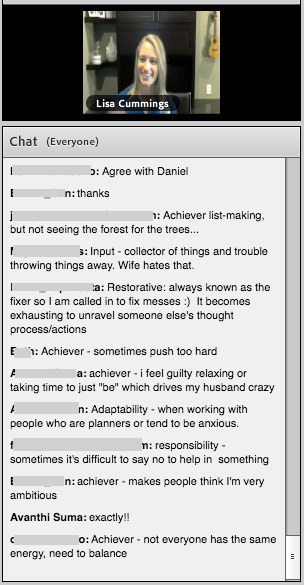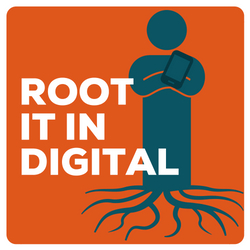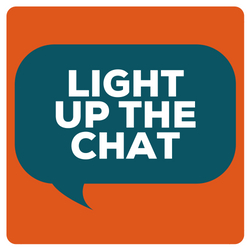Layer #1: Set The Stage By Creating A Specific Virtual Training Environment
Although there are many more, here are 5 focus areas that give you a taste for how we create the atmosphere for learning.
- Peer Learning And Inspiration
- Time To Step Back And Reflect
- Unconsidered Insights
- Visually Rich
- Fun-loving
Here’s each one with an example:
1. Peer Learning And Inspiration
I make sure to combine the inspirational part of their leadership journey with the practical application they get from peer learning. By doing this at the beginning of a year long program, it opens the door for them to build their network and set up accountability groups.
2. Time To Step Back And Reflect
In each virtual training, we give people the chance to step out of their busy day-to-day moments and reflect on what they’ll do differently as a result of this conversation. In this example from a Self-Awareness module, each leader leaves the room thinking about how they’ll deliberately aim their StrengthsFinder talent themes at a work situation.
In addition to considering the inspirational application each time, they also look at their shadow sides. As you can see from this chat box, they’re discovering how their talent themes can also be troublemakers for them. Besides giving them personal self-awareness, it also helps them build patience for the situations when their direct reports are overusing or misapplying their talents.

3. Unconsidered Insights
In this excerpt from our Delegation module, you can see how we addressed the complications that happen with common thinking. After participants shared that they’re simply too busy to delegate, we were able to walk through the logic in full. This is an example of a situation where I’m challenging a “most managers do this” perspective in a way that helps them play out that logic over a long period of time.
In this excerpt from our Emotional Intelligence module, we got into the tough conversation about people-leaders being held to a higher standard. And that although they were likely promoted for being an outstanding Individual Contributor or Subject Matter Expert…those are not the same skills that will bring them the highest levels of success in leadership. By using a proof point to share an analytical view on people skills, even those who were skeptical about “soft” skills became believers in the importance of emotional intelligence for leaders.
4. Visually Rich
Besides having good graphics in the deck, we consciously make a visually rich conversation. If I said to you, “don’t think of an elephant right now” – well, you’d probably envision an elephant anyway. Our minds are great at putting together concrete images. So we use the same principles in our training. In this excerpt, we’re helping our Strengths Accelerator participants make a tie between their concrete morning rituals (things like locking the door and putting the garage door down) with the abstract idea of spotting strengths patterns that they can’t see until they stop to notice them.
5. Fun-Loving
I’m also sure to not take myself too seriously. Years ago, I would have considered this an embarrassing blooper reel. Today, I see that the opposite is true. Being human is endearing to the audience. And once I finally allowed myself to be human, they were 10x more into the content. What I thought would be a credibility-buster became a learning booster. So today, after doing hundreds of these – I let the fun-loving side of me out. And it sets a tone that allows people to loosen up to build trust more quickly. In an often-cold environment of virtual settings, it works like magic.
You can also see that we create threads that are unique to each group. In this one, they had fun with competitions, so there was an ongoing conversation about who the “heavyweight champion of the world” was when it came to leadership factoids and research.
We also make our own shorthand. It creates an insider language that builds community and helps them support each other. In this final example, you see a bunch of “5’s” in the chat. This is a thing we create so that people can give each other high fives during the session. Although it’s a seemingly simple concept, it works in the same way that inside jokes and comments work amongst friends. It creates a sense of community and trust building that allows them to share on the small stuff so that when the deep, difficult conversations come up, they feel like they’re in a tight knit circle they can trust.

That’s it for the tone-setting section. There are so many ways we set the stage, yet these are a few of the most important. Be sure to catch the entire series by checking out the other layers:




As an international speaker and facilitator, Lisa Cummings has delivered events to over 15,500 participants in 14 countries. You can see her featured in places like Harvard Business Publishing, Training Magazine, and Forbes. She specializes in virtual StrengthsFinder training for teams. When she’s not out spotting strengths in people, you’ll find her playing drums, rescuing dogs, or watching live music in Austin, TX. Her Top 5 StrengthsFinder Talents are: Strategic | Maximizer | Positivity | Individualization | Woo.

